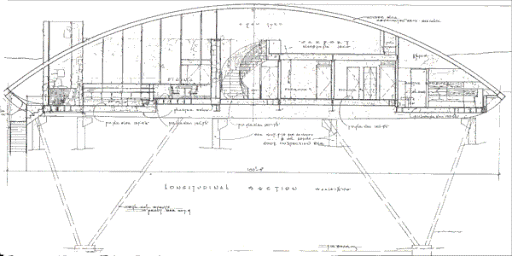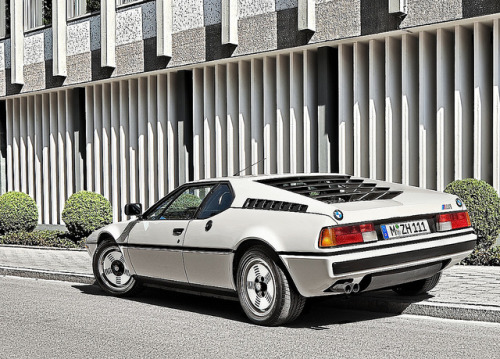
Wednesday, November 21, 2012
Sunday, October 21, 2012
Thursday, October 11, 2012
Wednesday, October 10, 2012
Tuesday, October 9, 2012
Hamburg Apartment
There's nothing baroque about the neo-baroque apartment of ad-man Wolfgang Behnken of Young & Rubicam, shown below. It is rather an almost miesian gallery of good design, with pieces by the Eames, Florence Knoll, Milo Baughman and Mies as well as a fantastic coffee table by George Nakashima. There are also many outstanding lamps: especially those by Serge Mouille and Christian Dell.
The apartment is mostly painted white, with few carpets and textiles, which really puts focus on the design pieces. I suppose it does, however, require a certain type of person to live in this sort of almost barren atmosphere, but that does not change the fact that it looks stunning. Mr. Behnken also seems to have two livingrooms - perhaps one being the gentleman's room?
The kitchen and bathrooms are also very plain with their white mosaic tiles, and chairs by brit minimalist Jasper Morrison. Notice the construction-site-type lamps above the mirrors, which are actually of a quite beautiful design.
Labels:
eames,
floors,
germany,
kaiser idell,
kelim,
kjaerholm,
knoll,
le corbusier,
mies van der rohe,
mouille,
oak,
white
Monday, October 1, 2012
Yet another Ox-chair...

This time by Wegner. This one is a version, dubbed Queen, of his regular ox-chair. The chair is quite rare, it usually takes a couple of years between when they surface on the market. Considering this, and the fact that they are quaranteed to be produced by AP Stolen - a rarity in itself - and not Erik Jörgensen make these chairs quite the barrgain, as they typically fetch prices around 60-80 per cent on that of regular, fresh Ox-chairs.
Tuesday, February 28, 2012
The Lesser-Known Ox-Chair
Designed by Arne Jacobsen for the National Bank of Denmark in 1966.
Arne Jacobsen designed this chair over a five-year period. Large, impressive, and extremely comfortable, when it was presented in 1966 it was met with surprise and admiration. “This is also how he can be: angular and with a touch of martial temperament that we could call Germanic or perhaps more properly Japanese in expression”
- Thau and Vindum, eds., Jacobsen.
pictures by seier + seier
read more about the National Bank building here
Labels:
60's,
70's,
architecture,
copenhagen,
denmark,
furniture,
marble,
photography
The Rainbow House
Comparing architecture to music is quite a clichée, but with this house, considering it was built for jazz musician Russ Garcia, such an allegory isn't too far off.
This above video, featuring Devendra Banhart and his girlfriend, beautifully directed by Lisa Eisner, was made for spectacle-firm Oliver Peoples (you know, American Psycho?). It is set in the Garcia residence, also known as the Rainbow House (which was pulled down by an aussie hillbilly with a mullet and a truck in Lethal Weapon 2) on Mulholland Drive, designed in 1964 by none other the man himself - the master of googie architecture - John Lautner. It is a truly amazing house, and it only gets bettter once you see it's insides and the stunning spaces it posesses.
This above video, featuring Devendra Banhart and his girlfriend, beautifully directed by Lisa Eisner, was made for spectacle-firm Oliver Peoples (you know, American Psycho?). It is set in the Garcia residence, also known as the Rainbow House (which was pulled down by an aussie hillbilly with a mullet and a truck in Lethal Weapon 2) on Mulholland Drive, designed in 1964 by none other the man himself - the master of googie architecture - John Lautner. It is a truly amazing house, and it only gets bettter once you see it's insides and the stunning spaces it posesses.
The house had seen it's best days, and at the turn of the millenia, countless "improvements" had wrecked the soul of the house, but its current owners has however had it renovated by architects Marmol & Radziner, who also worked on the restoration of Richard Neutra's Kaufmann house, and the decorator, Darren Brown, put that old-school playboy-feel to the interiors.
The binuclear floorplan of the building is as genius as it is original, and I cannot help to wonder why it hasn't been more widely copied. On the one side of the house exists the private sphere: bedrooms, bathrooms, an office and a movie room - spaces that do not demand the grand volume of the great room, situated in the other wing, along with an elevated dining area and a open kitchen. When it in 2002 came on the market, it did so at the bargain price of $1,395,000.

Labels:
60's,
70's,
architecture,
california,
lautner,
music,
photography,
usa,
video
Friday, February 3, 2012
flickr: I got it
Labels:
60's,
70's,
architecture,
bronze,
copper,
jaenecke samuelsson,
östermalm,
photography,
sandstone,
stockholm,
sweden,
tengbom
Wednesday, January 25, 2012
Two modern interpretations of these bathrooms:
Ok the last one may not be totally obvious, but if you note the rectangular tiles are of a similair size. I think both bear testament to a renewed interest in he bathrooms of the 70's. Bravo!
Ok the last one may not be totally obvious, but if you note the rectangular tiles are of a similair size. I think both bear testament to a renewed interest in he bathrooms of the 70's. Bravo!
Wednesday, January 4, 2012
Lidingö, circa 1970.
Green is the ultimate colour of a bahroom. What could be more cozy than standing under a hot shower imagining yourself in a rainforest? This also relates to Le Corbusiers ideas on colour - he basically thought that the shade of a floor/wall/ceiling should correspond to nature's palette. In this age where every bathroom is supposed to be some spa-hamam-refuge, green tiles ought to be more popular than they are.
Sadly, few people dwelve on these matters for mucher longer than it takes to look through the latest IKEA catalogue. And the two bathrooms above, with their fantastic rustic, domestically hand-made ceramic tiles so typical of he late sixties - early seventies, have a very uncertain future, now that the house has been sold. Statistically, they will not make it. And it is a great fatal irony that the possibility of the new owners having chosen exactly this house because of its spatial character, surely furnishing it with mid-century teak cabinets and Eames DSR's (Dowel legs); yet remain completely oblivious to the aesthtic kindred spirit that such bathrooms (and kitchens, mind you) are in relation to the afore-mentioned furniture that they just had to have.
But mark my words:
One day, they'll regret it.
Fiscally or otherwise.
Subscribe to:
Comments (Atom)











































